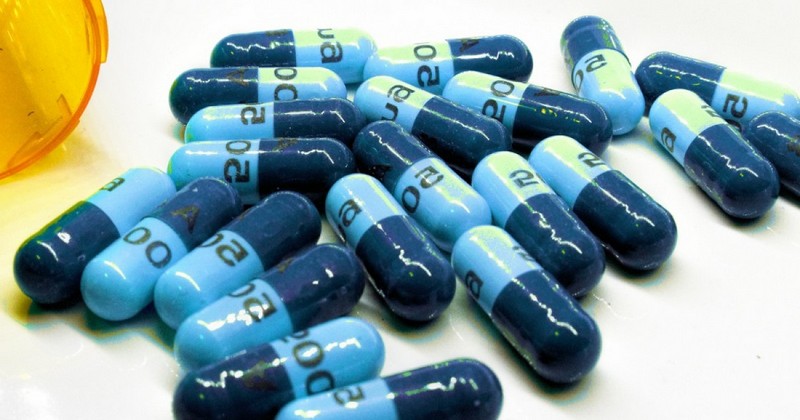Bromantan: properties and effects of this drug.

A substance sometimes used in the clinical setting, but also in the doping of athletes.
Bromantan is a stimulant drug that was developed by the Soviet Union which was developed by the Soviet Union in the Russian army to motivate soldiers invading Afghanistan. It has anxiolytic (decreases anxiety) and stimulant (provides energy) properties.
This substance generated much controversy in the year 1996, since four athletes of the Atlanta games were disqualified of the competition when it was discovered that they had taken it by way of doping.
Bromantan: what is it?
Bromantan is a drug originating from Russia, with properties similar to those of amphetamine. It is an atypical psychostimulant and anxiolytic, belonging to the adamantane family..
It is used in Russia to treat neurasthenia. Neurasthenia, on the other hand, is a type of neurosis, accompanied by intense depressive symptoms and great emotional instability.
Specifically, it is said that bromantan was developed in the 1980s in the Russian army by the Soviet Union, with the aim of being used by army personnel. Currently, bromantan is sold as a drug under the trade name "Ladasten"..
Properties
Among the most characteristic properties of bromantan are that of reduce or inhibit fatigue, increase physical energy, reduce anxiety levels, stabilize mood, and enhance physical energy.stabilize mood and enhance memory and concentration.
In addition, it is considered a drug that physical activity of the body under extreme environmental conditions, such as lack of oxygen (oxygen deprivation).such as no (or very little) oxygen, high temperatures, etc.
Mechanism of action
However, the mechanism of action of bromantan is actually unknown; scientists believe that this substance acts by increasing brain activity (specifically, at the level of the hippocampus, the hypothalamus nucleus (specifically, at the level of the hippocampus, the nucleus of the hypothalamus, and also in the reticular nucleus of the brain).
They also believe that bromantan is strongly related to the activation of the dopaminergic systemand that it acts through the increase of tyrosine and some amino acids. That is to say, it would promote the activation of the dopaminergic system, and this would increase the concentration and the alertness of the person.
On the other hand, it is believed that the activation of the dopaminergic system in the brain (or the synthesis of dopamine) promoted by bromantan could explain the potentiation of a feeling of happiness experienced by the person taking the substance.
Uses
To summarize, the main uses of bromantan are:
1. Improve brain function.
This This leads to improvements in alertness (vigilance) and also in motor coordination.. In addition, the level of anxiety would also be reduced.
2. Improve physical activity
In studies with rats, it was shown that bromantan increased the effects of the noradrenergic and adrenergic systems; this resulted in the rats being able to swim efficiently for longer periods of time.
3. Reducing inflammation
Also in rats, bromantan was shown to reduce depressive symptoms caused by certain inflammations. caused by certain inflammations.
4. Improve neurasthenia
As we have seen at the beginning, bromantan can also help reduce the symptoms of neurasthenia, such as insomnia, fatigue and headache.
Type B stimulant
Bromantan, among the substances used for doping, is classified as a type B stimulant, along with amphetamines, pemoline, cocaine and other stimulants.. Logically, type B stimulants are prohibited substances in the world of competition and sport.
What stimulants do is to reduce fatigue and reaction time, as well as to increase alertness and concentration; these would therefore be the main functions of bromantan.
In addition, some stimulants also increase the aptitude for exercise; others, on the other hand, also improve endurance and decrease sensitivity to pain, for example.
Controversy: a form of doping?
In 1996, bromantan generated a lot of controversy in the world of sport, as several athletes at the Atlanta games were doped. several athletes at the Atlanta games were found to have consumed the substance, disqualified from the competition and disqualified from the competition.The athletes were disqualified from the competition and judged as a form of doping.
Some experts claimed that it was a medicine, and others claimed that the drug was a stimulant, and that it increased physical strength and recovery after physical exertion.
As a result of this event, the International Olympic Committee (IOC) went to the Court of Arbitration for Sport to file a lawsuit.
But the Atlanta games were not the only ones where athletes were found to have consumed bromantan, but years later, for example in 2013, Chamberlain Oguchi, a Nigerian basketball player who debuted in the Endesa League (with Gran Canaria), also tested positive for this drug.
Doping in sport
Doping consists of all those actions carried out by athletes with the aim of modifying their organism at a physiological level, increasing their capacity of recovery and recovering physical energy in a fast way. unnaturally, that is, by ingesting some kind of substance or drug.
They do this with the ultimate goal of either being able to enter to participate in a certain competition, or to increase their performance within it in order to increase their chances of winning.
Thus, at the legal level, it involves the use of prohibited substances such as drugs; all of them are included in lists of pharmacological categories (each country and sports organization has its own).
However, doping can have irreversible and very serious effects; this issue appeared for the first time when, as a result of doping, the cyclist Arthur Linton died at the age of 29, in 1896, two months after winning the Bordeaux-Paris race.
(Updated at Apr 12 / 2024)